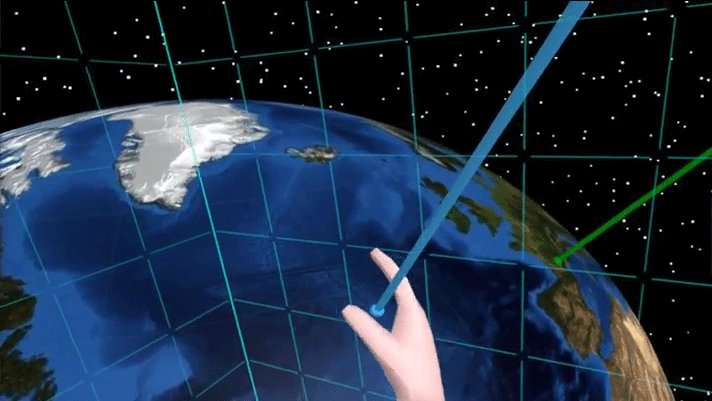
Bock uses virtual reality to improve mathematics education
Camden Bock is a Ph.D. candidate in the STEM Education program at the University of Maine College of Education and Human Development. Bock looks at how technologies, like virtual reality, can be used to analyze three-dimensional objects and researches how these technologies can be used to help students understand three-dimensional mathematical objects in three-dimensional space.
Immersive virtual reality (VR) can allow students to manipulate geometric shapes through space and vary their perspective on an object. This kind of virtual hands-on experience can help students connect with mathematical concepts on a different level.
“Most of our diagrams in geometry, especially school geometry, are drawn on chalkboards, projector screens…or even with pencil and paper. When we talk about three-dimensional things, we talk about them [and] we draw them in 2-D. So we’re curious about what is different as far as how students interact and think about things when they work with a three-dimensional representation of a three-dimensional figure,” says Bock.
Bock earned his B.S. in mathematics and certification in secondary mathematics education at Bates College in Lewiston. He earned a Master of Science in Teaching (MST) at UMaine and plans to write his Ph.D. dissertation on how classrooms can make virtual reality technologies collaborative, and show how people can work together with spatial inscriptions.
“A lot of virtual reality environments are sort of isolating. If you’re wearing a headset, and even if you’re in a room with other people, you can’t see other people or how they’re interacting. I think that it’s exciting to look at how people could work together and how that changes things,” says Bock.
Bock has published several papers pertaining to virtual reality and mathematics education. One of his latest, titled “Digital Representations without Physical Analogues: a Study of Body-Based Interactions with an Apparently Unbounded Spatial Diagram” was published in Digital Experiences in Mathematics Education in late 2020. The paper reported on a study that looked at teaching spatial diagrams and lines, and how some lines can extend indefinitely. He developed “an immersive environment that contained a dynamic spatial diagram of a triangle whose vertices were points on two apparently unbounded parallel lines.” Students could move around the diagram and interact with objects in a 3-D world. The research showed how “natural bodily interactions with large-scale spatial diagrams can create new opportunities for learning and teaching.” Bock collaborated with his doctoral advisor, assistant professor of mathematics education and instructional technology Justin Dimmel.
Bock has always been interested in and excited about mathematics. But he struggled to like math classes growing up. “I’ve had a few good teachers but I was rarely excited about math class in school. I often found a tension between dreading math class, but also enjoying mathematics. That was something I was curious about how to resolve.”
Bock is one of three recipients of the University of Maine’s 2021-22 Janet Waldron Doctoral Research Fellowship and recently was featured on an episode of “The Maine Question” podcast. Following the completion of his doctorate, Bock plans to work to help shape a new generation of teachers, change how they think about presenting math to their students, and perhaps even how they look at mathematics themselves.
Contact: research@maine.edu
